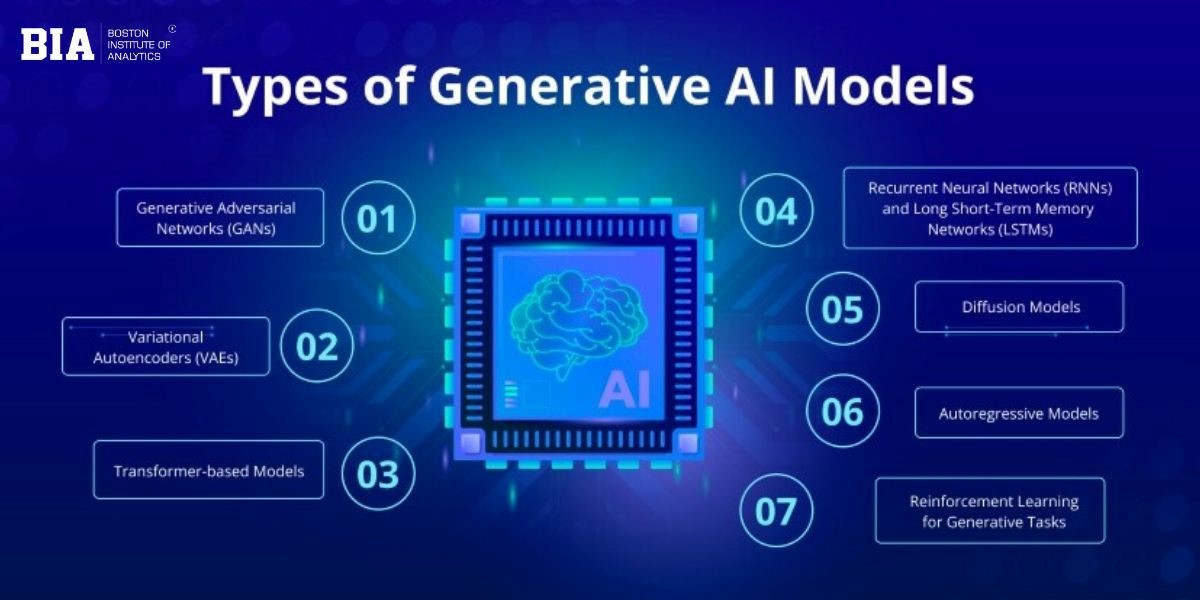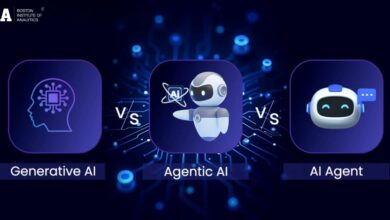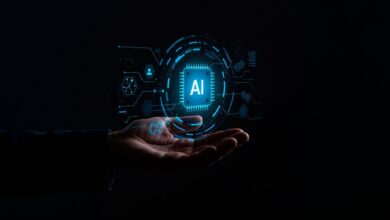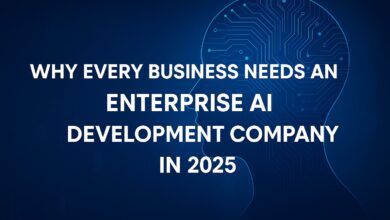The Future of Generative AI: Trends, Tools, and Use Cases
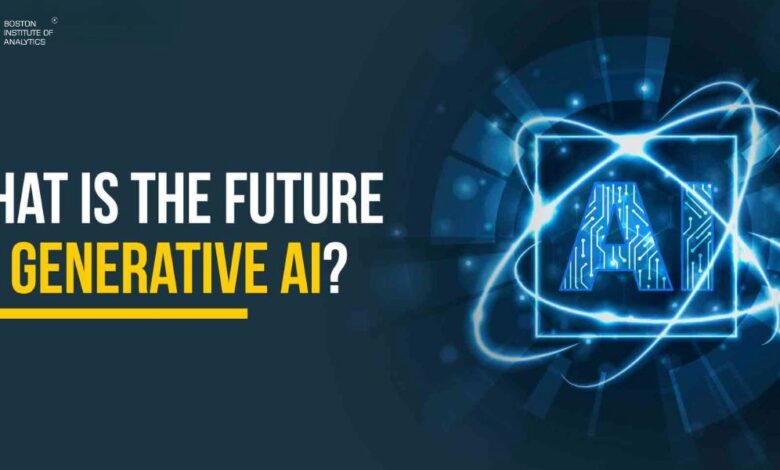
The digital world is in constant flux owing to continuous technological innovations. Among the transformative forces, Generative AI is stated to be one reshaping industries and redefining creative processes. The sheer potential of generating hyper-realistic images, composing interesting narratives, designing new materials, and fast-tracking drug discovery are some of the characteristics giving generative AI a truly futuristic facade, which it is now working hard to cast away. Understanding the generative AI arc, the key tools, and enabling applications is turning from a matter of interest for a tech geek, into a crucial task for all professionals crossing various domains.
This one-stop guide takes a deep plunge into the exciting future of generative AI, the major trends influencing that future, the very latest tools enabling generative capabilities, and how broad use cases are already disrupting industries. Alongside, we shall discuss how a Generative AI Course, such as that by the Boston Institute of Analytics, can prepare you with crucial know-how and skills to walk this transformation and make the most of the vast spectrum.
Unveiling the Trajectory: Key Trends Shaping the Future of Generative AI
The development of generative AI is considered by rapid progresses and a constant push for greater cleverness and applicability. Several key leanings are poised to define its future:
- Enhanced Realism and Fidelity: Earlier models sometimes produced marvels that betrayed faint glimmers of unmistakably manufactured origin. The foregoing promises a time of great realism, with models that rarely if ever fail to deceive viewers into accepting generated images, videos, sounds, and even 3D visuals as humanly made. Such technologies will be made possible by course corrections in model architectures, training data, and computing power. Imagine marketing materials with photorealistic images for products, or virtual training environments utterly indistinguishable from reality.
- Increased Accessibility and Democratization: For the longest time, developing or deploying generative AI models was extremely taxing on computational resources, requiring bigger cyber armies and the best of minds; hence, it was thought to be the preserve of big corporations and research institutions. A democratization of these technologies will be granted in the future, wherein easy-to-use platforms, the availability of pre-trained models, given enough computing and deep software expertise, will empower any regular Joe or even small businesses to use generative AI. This trend will open a gateway for creativity and innovation in itself across varied trades.
- Multimodality and Integrated Capabilities: Current generative AI models often specialize in a single modality, such as text, image generation, or audio generation. Truly multimodal AI developments stand in the future, where information is seamlessly integrated and understood across formats. For example, consider having a text prompt given to a model that can produce a video along with music and voiceovers or a design tool that can interpret sketches, written descriptions, and emotional cues to generate product prototypes.
- Greater Control and Interpretability: While the generating side of generative AI usually spins out brilliant creativity, trying to control the specific features of AI and nuances of the generated content can be difficult. The next-generation techniques would, therefore, concentrate on finer control over the generation process so that the output can be directed and made predictable to a certain extent. Another line of research includes improving interpretability of generative models, where the end-user can understand why a model has yielded a certain output, thereby building trust and assuring responsible use.
- Personalization and Customization: The capability to customize generated content to the individual preferences and needs will be a major factor in adoption. Think about personalized news feeds produced based on your interest, personalized learning materials customized to your learning style, and custom product designs capturing your unique specifications. Generative AI will enable hyper-personalization in various
The Arsenal of Innovation: Key Generative AI Tools and Technologies
The rapid development in generative AI is fueled by a miscellaneous range of influential tools and fundamental technologies. Empathetic these building blocks is important for appreciating the capabilities and future potential of the field:
- Generative Adversarial Networks (GANs): Goodfellow and his collaborators became the first to introduce GANs, which are made up of two neural networks, a generator that creates synthetic data and a discriminator that tries to discerning real from generated data. These two networks are embarrassing in an adversarial fashion and gain without limit, by worsening each other’s scores. GANs have been more successful than any other technology for generating images and videos; style transfer, and generating super-resolutions. I suspect ongoing efforts will center around improving stability of GAN training, generating images and videos with more detail and coherence, and new architectures.
- Variational Autoencoders (VAEs): VAEs are probabilistic generative models, they find learn how to compress an input dataset into a representation (latent space), that can then be sampled to create new data points. VAEs lead to useful outcomes for anomaly detection, data compression, generating diverse outputs, and construction generation tasks. Future efforts will likely be centred around building disentangled latent spaces (where representations can be independently controlled) and improving quality/coherence of generated samples.
- Transformer Networks: Transformer networks, developed for natural language processing and improved by self-attention, have shown promise across various modalities such as image, audio, and even protein structure prediction. Models like GPT (Generative Pre-trained Transformer) have changed the landscape of text generation, and architectures like Vision Transformer (ViT) are just starting to show state-of-the-art performance on image generation. These models are paving the way to becoming a significant alternative to GANs for the generation of high-quality images and videos.
- Diffusion Models: Diffusion models, meanwhile, take the approach of gradually corrupting the input data with noise until it becomes pure noise, they then learn to reverse this process to generate new data from the noise. This iterative denoising process can help create new data in a more stable way and ultimately produces highly realistic and diverse output.In the future, researchers will likely seek to improve the sampling speed of diffusion models, and also find ways to apply the principles to generation of other modalities.
- Large Language Models (LLMs): Models such as GPT-3, LaMDA, and many more exemplars have shown an unparalleled ability to understand and create text that mimics human rhythms and structures, translate languages, create all manner of creative content, and answer your questions with information. These LLMs are trained on colossal datasets of text and code, allowing them to learn contextual relationships with ease, generating current and coherent responses. The future of language models will involve developing larger and more capable LLMs with better reasoning, better factual evidence, and the ability to engage in a more naturally human-like and engaging manner.
Real-World Impact: Diverse Use Cases of Generative AI
Generative AI is no extended confined to examination labs; it’s already making a tangible impression across a wide range of productions, with its probable continuing to expand:
- Content Creation and Marketing: Generative AI is trailblazing a new frontier in content creation by allowing organizations to automate everything from text articles to marketing copy to social media posts, images, videos, and even music. This can greatly reduce the time and money spent on content creation, allowing organizations to ramp up marketing quickly and personalize content to the targeted audience. Just think of all the AI powered tools that will create enticing ad campaigns, produce product descriptions, or design website layouts.
- Design and Manufacturing: Generative design algorithms can generate a huge number of design options based on constraints and objectives, creating opportunities for engineers and designers to explore even more options and optimize designs based on different characteristics (e.g., performance, cost, manufacturability). In construction, generative AI can assist in designing unique materials based on specific characteristics, optimize existing or new production processes, and—at least in some cases—generate 3D printed parts with complex geometric shapes.
- Healthcare and Drug Discovery: Generative AI is playing an increasingly important role of generative AI in healthcare, with applications ranging from drug discovery and development to personalized medicine. AI models can be used to generate novel drug candidates, predict the efficacy and toxicity of drugs, and even design personalized treatment plans based on individual patient data. Generative AI can also be used to create synthetic medical images for training diagnostic algorithms and to generate realistic simulations for surgical training.
Final Thoughts: Embracing the Generative AI Revolution with the Boston Institute of Analytics
Generative AIs are ushering in a new future with the revolutionary potential to transform industries. From hyper-realistic content generation to advances in science and medicine, generative AIs can change our world in ways we can only begin to imagine! If you study, know, and understand the trends, tools, and applications of generative AIs, you can stretch your creativity and transform your organization.
At the Boston Institute of Analytics, we understand the significance of generative AIs and their implications for our future. Our Generative AI Course includes all the knowledge, skills and hands-on experience to prepare you to be a practitioner of generative AI. Whether you are a data scientist, creative, or business leader, our structured, engaging course will help you understand and position your skills to navigate the generative AI revolution.
Join us at the Boston Institute of Analytics and take the first step toward mastering the future of creativity and innovation with our Generative AI Course. The future is generative and starts now.

